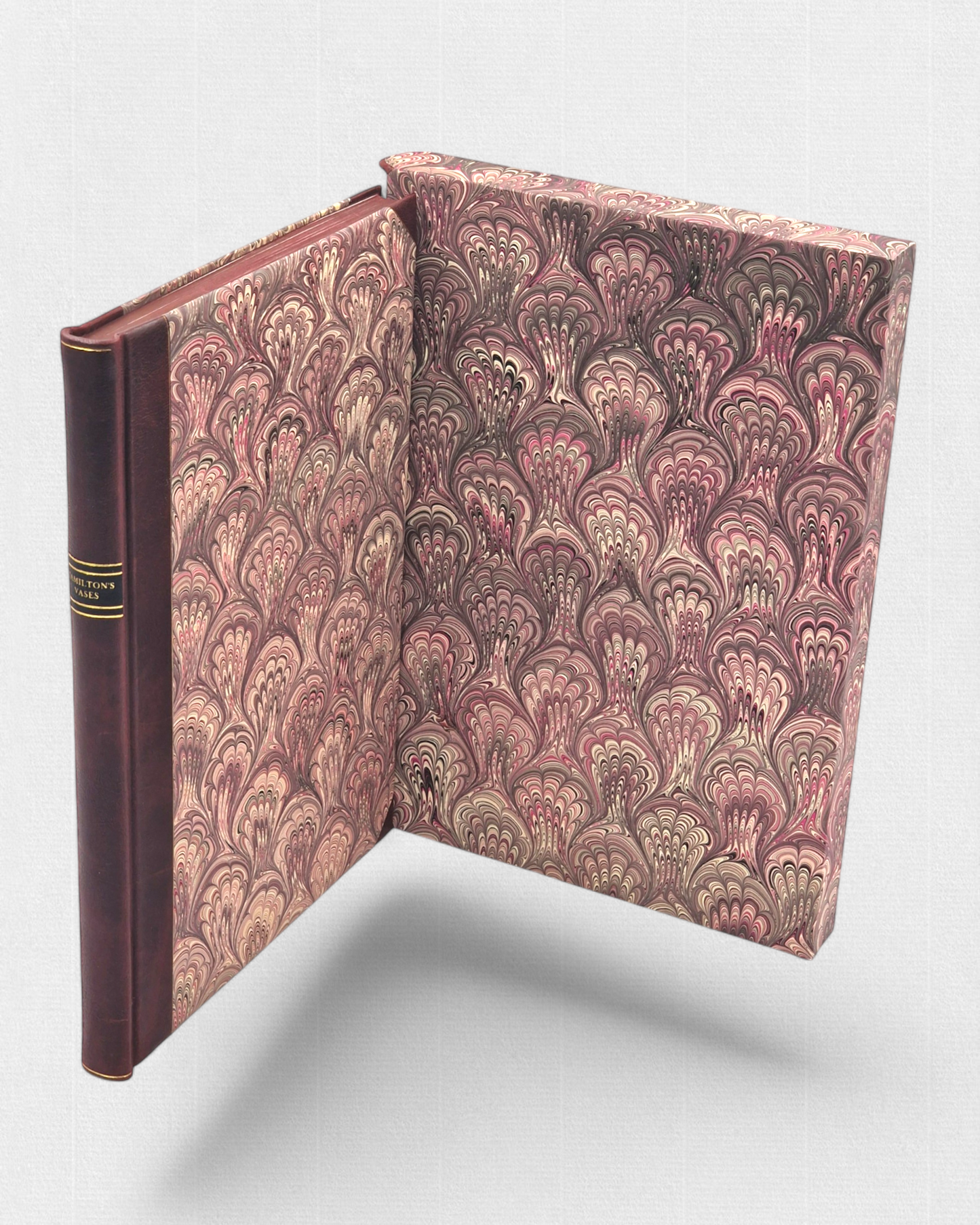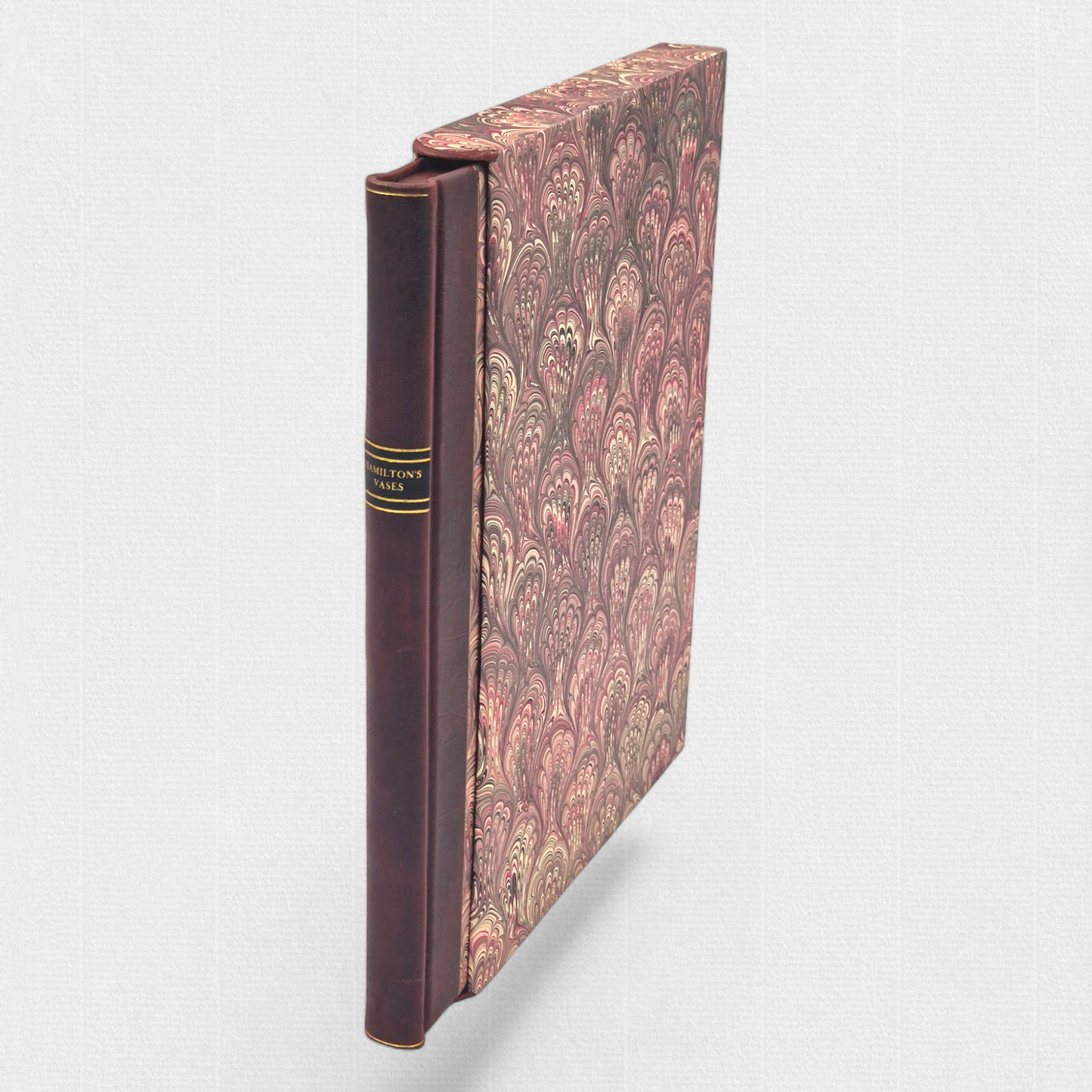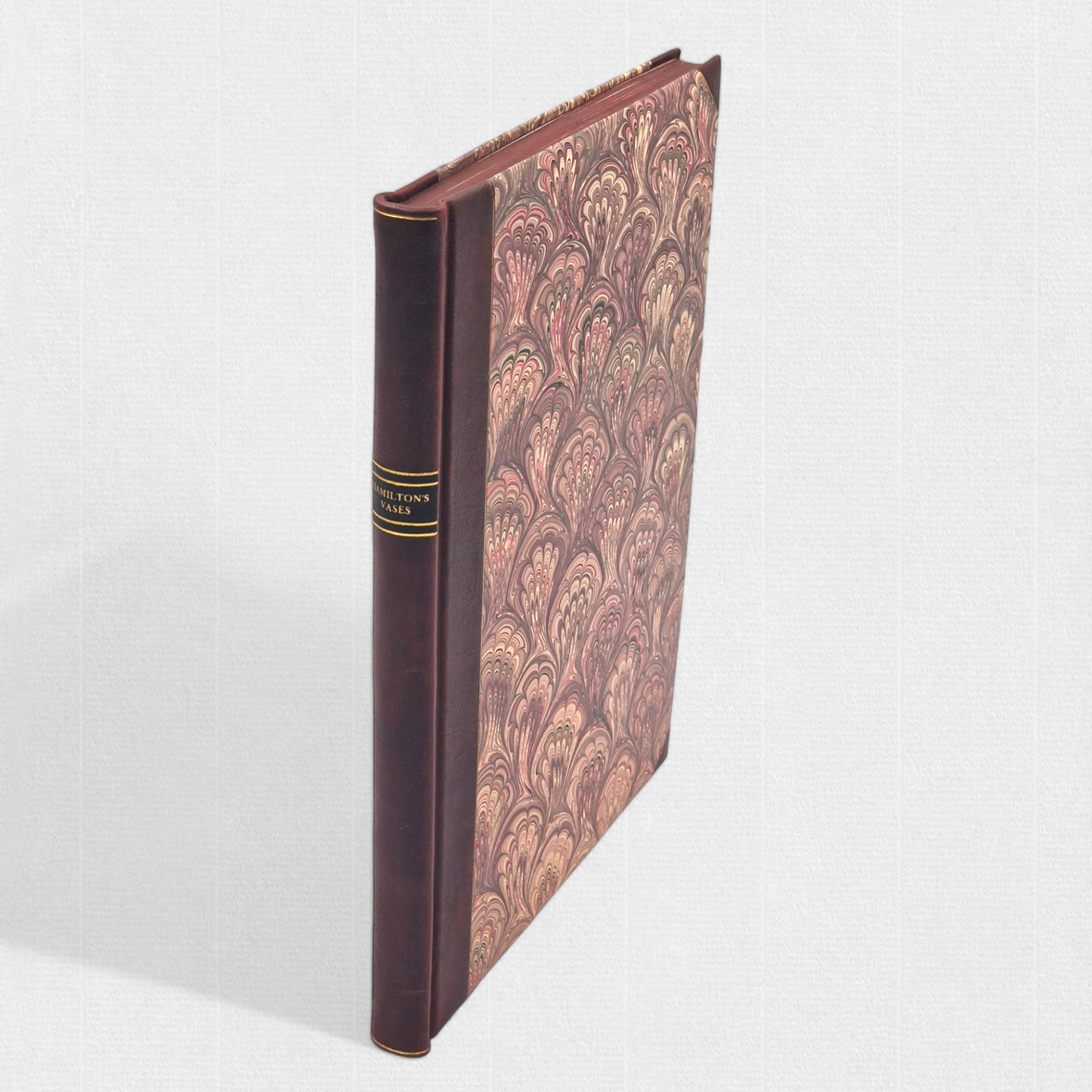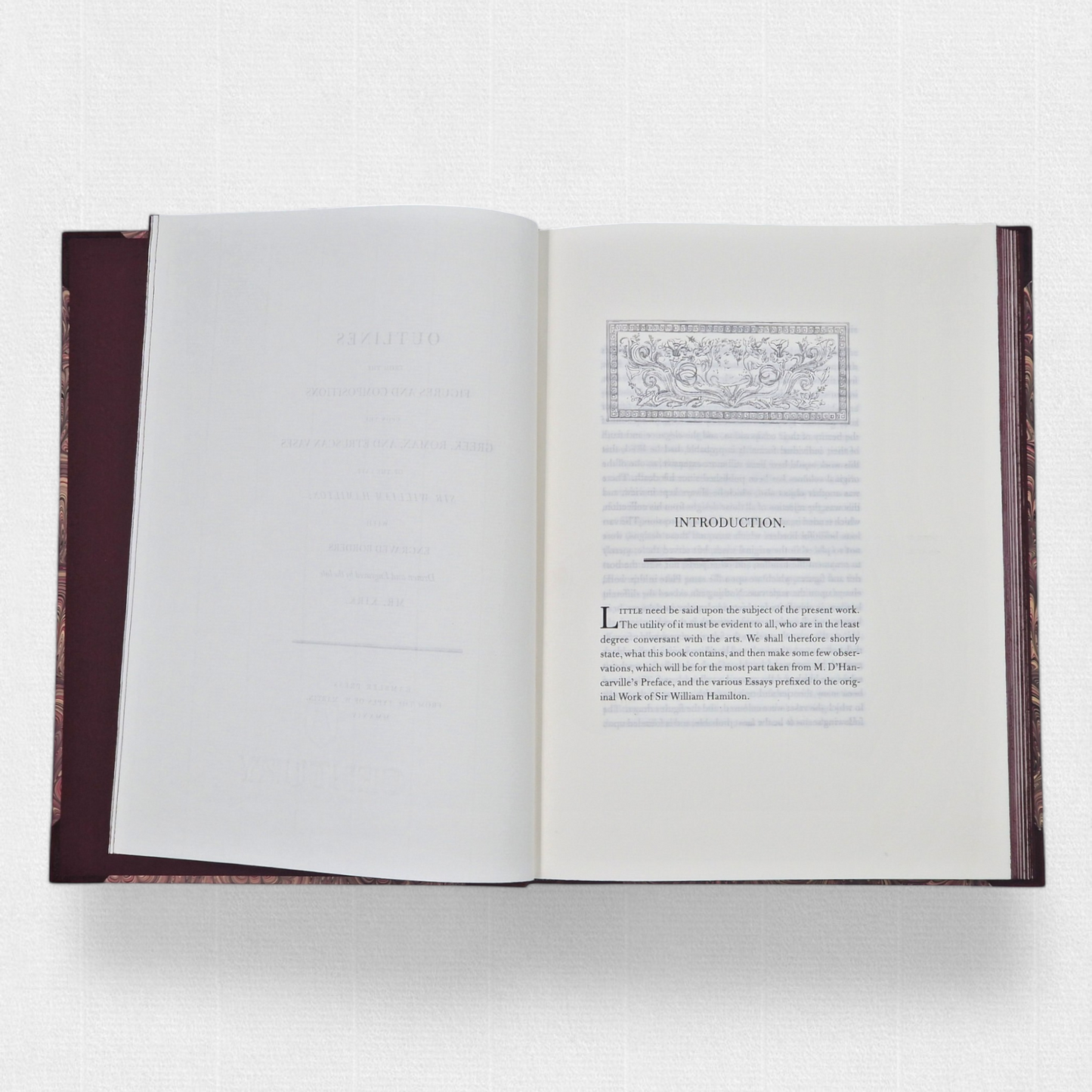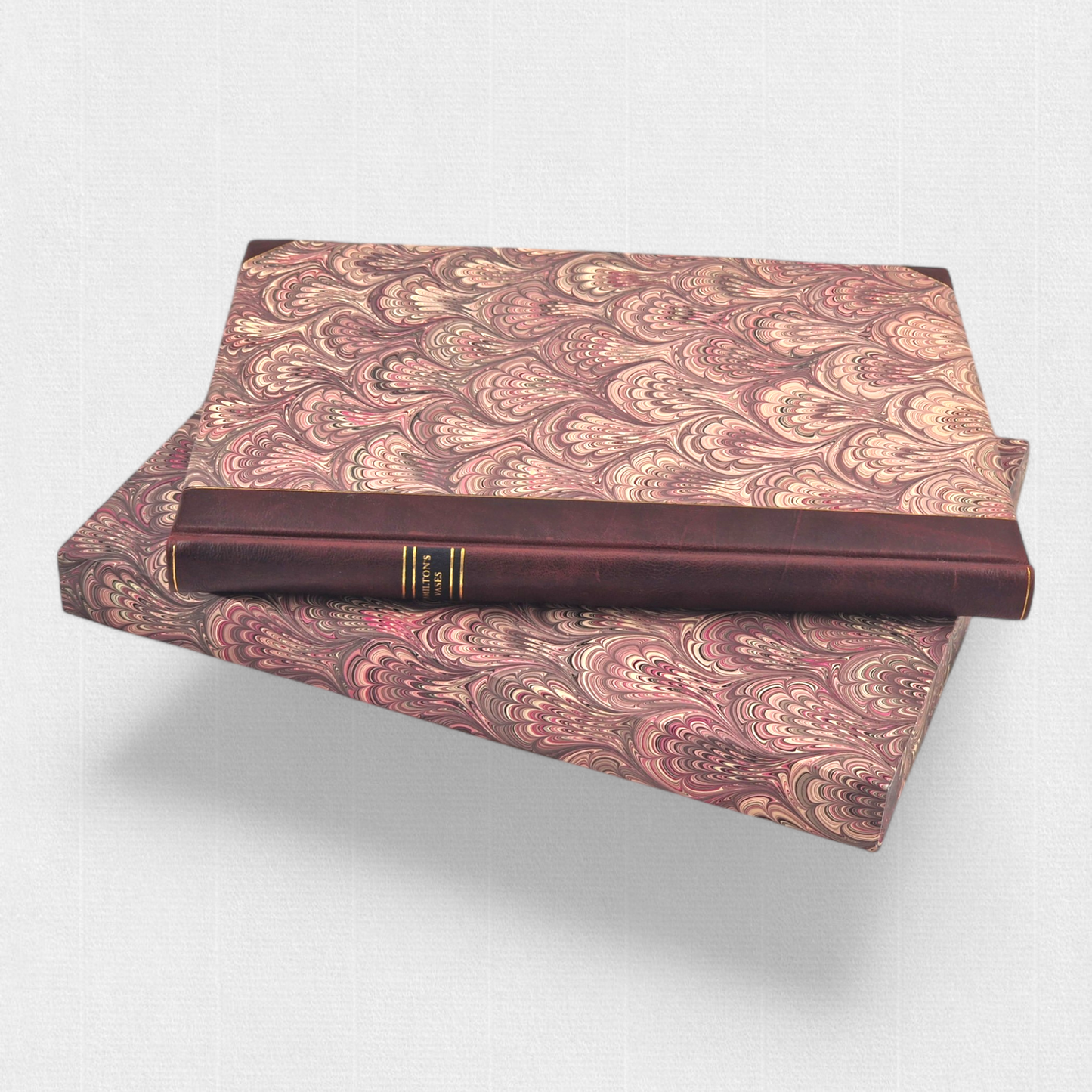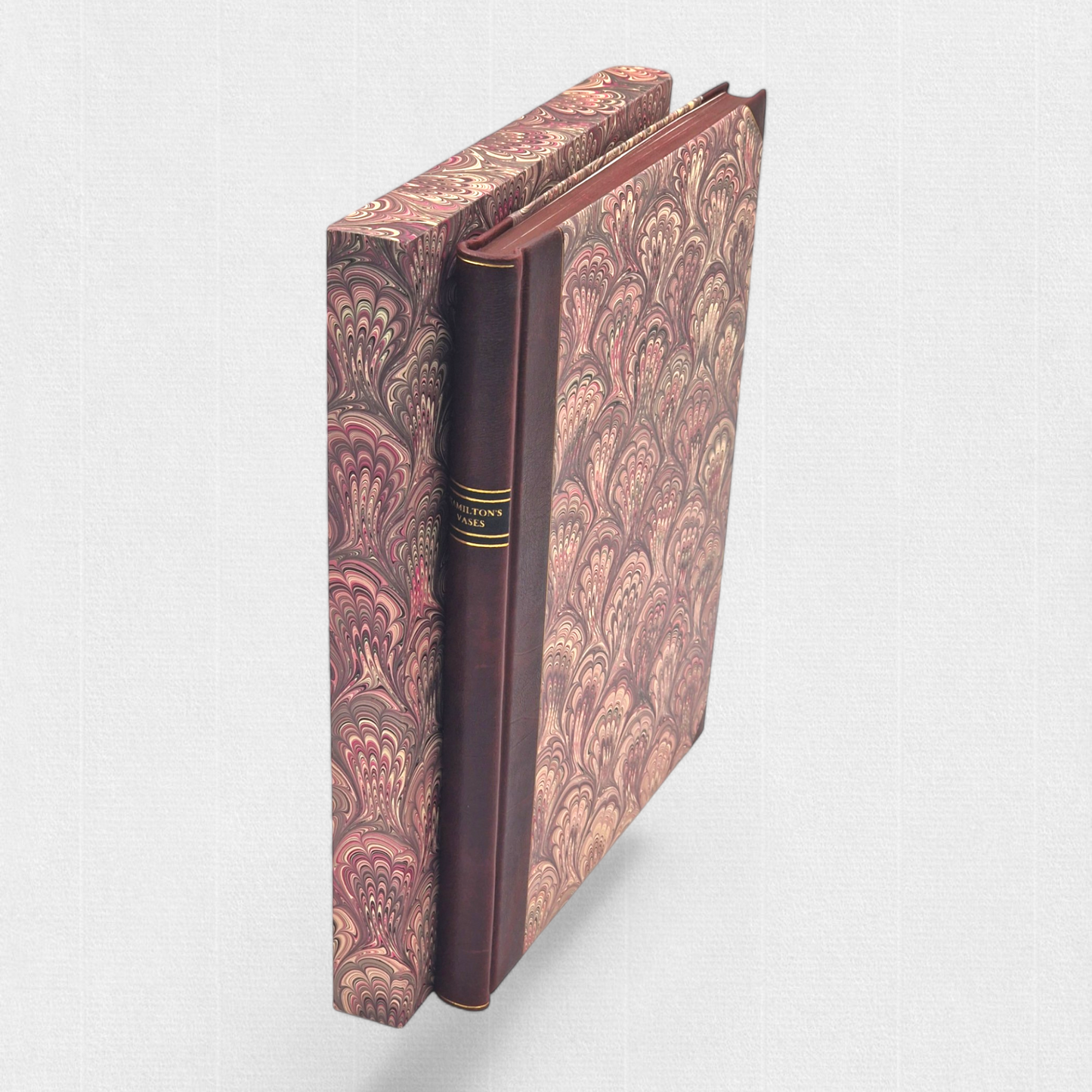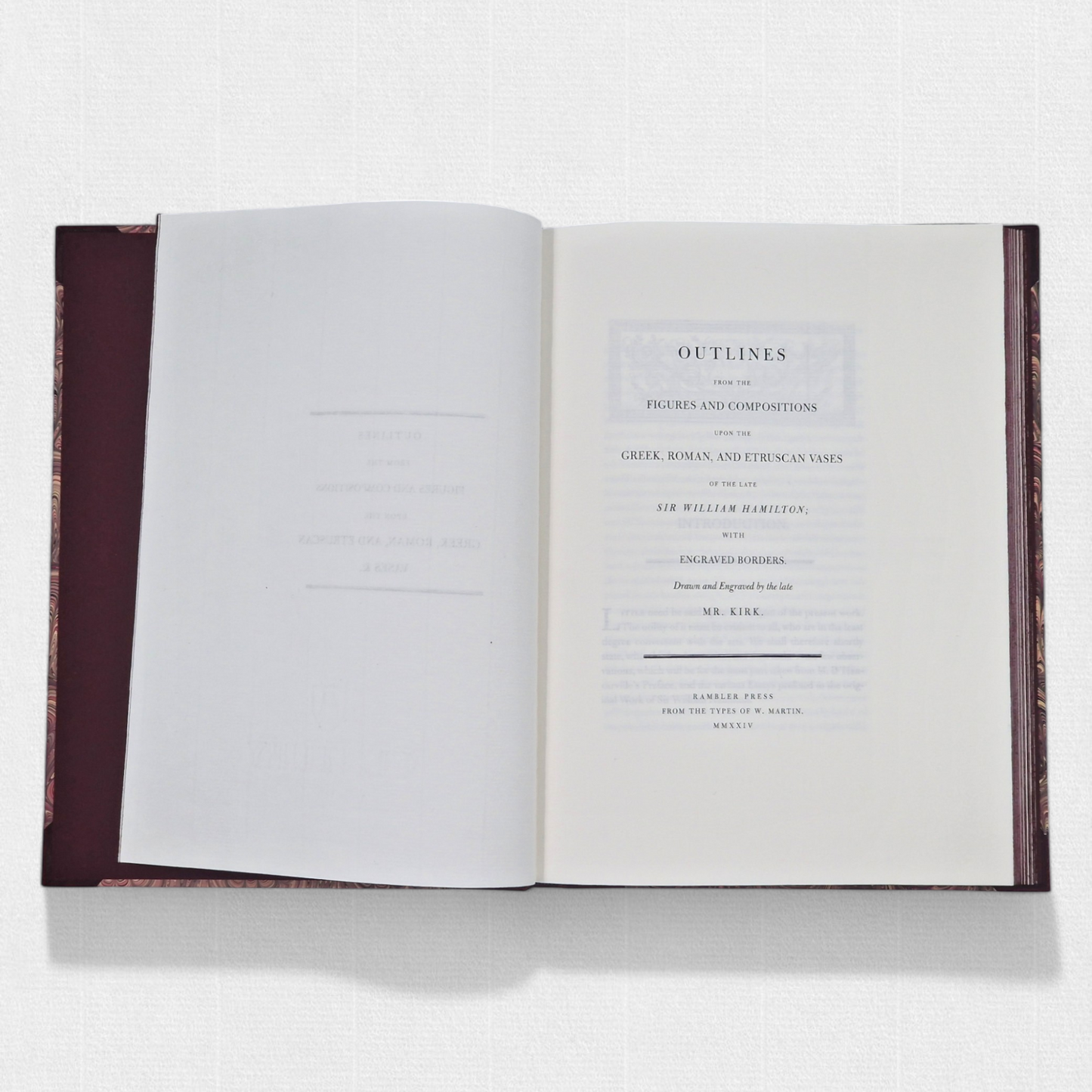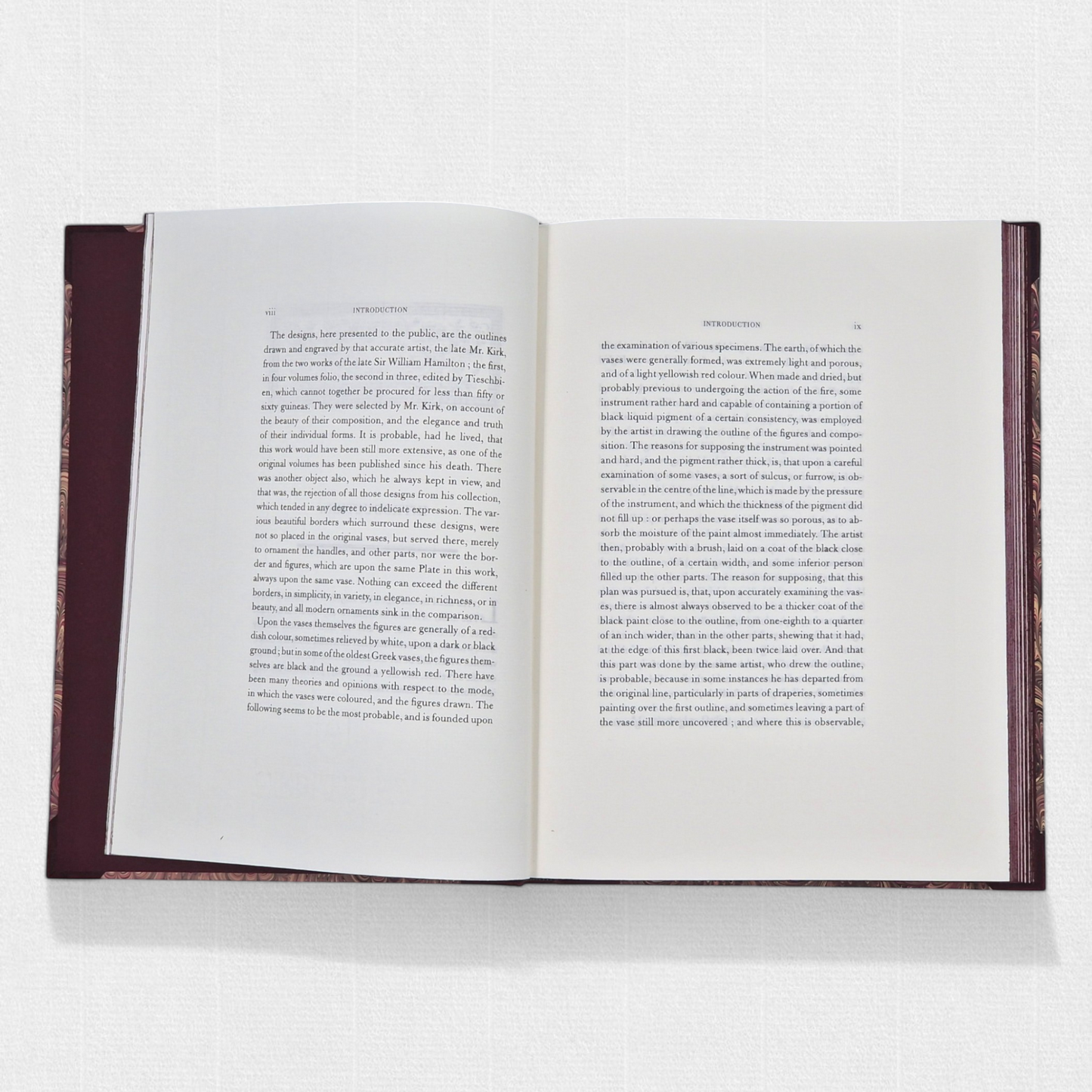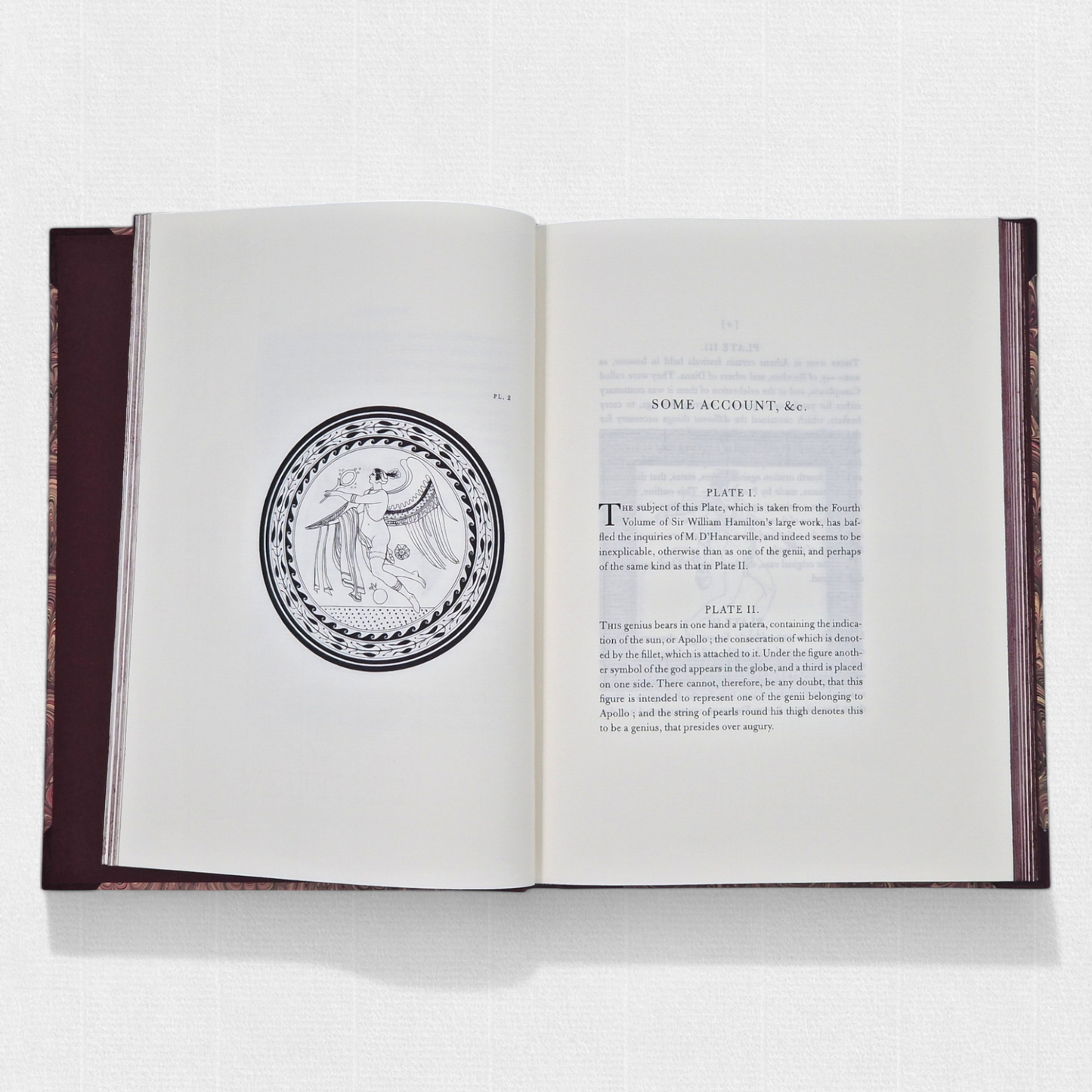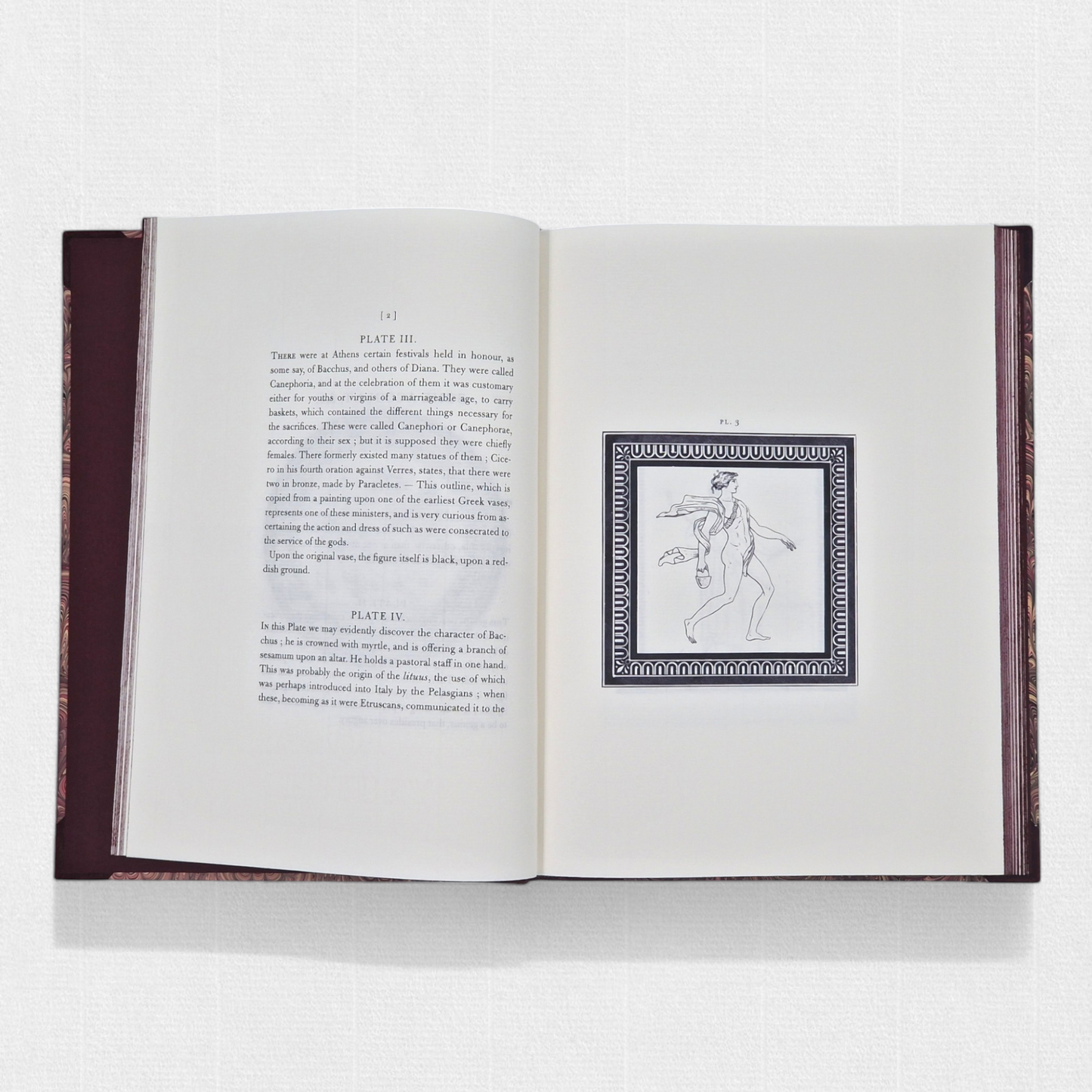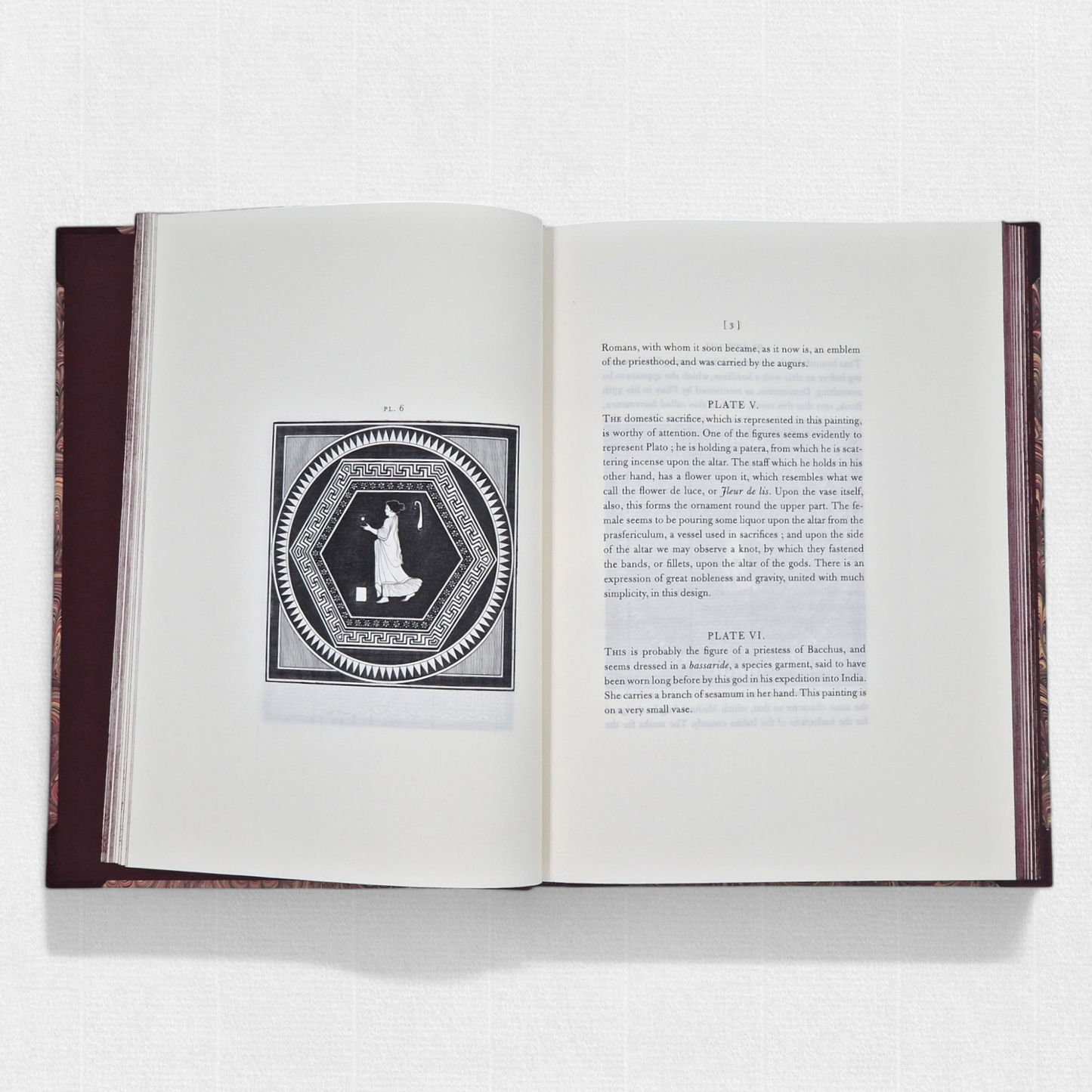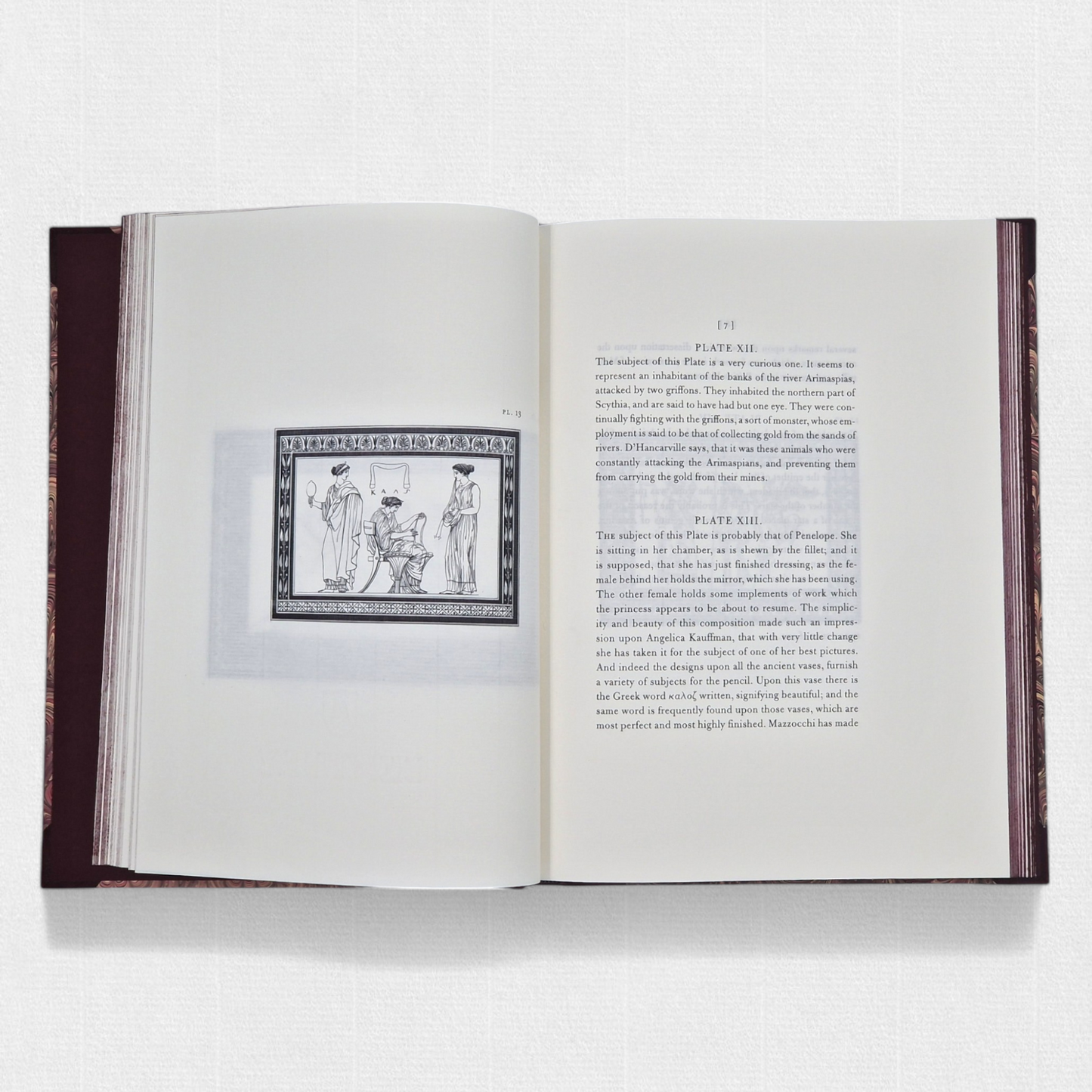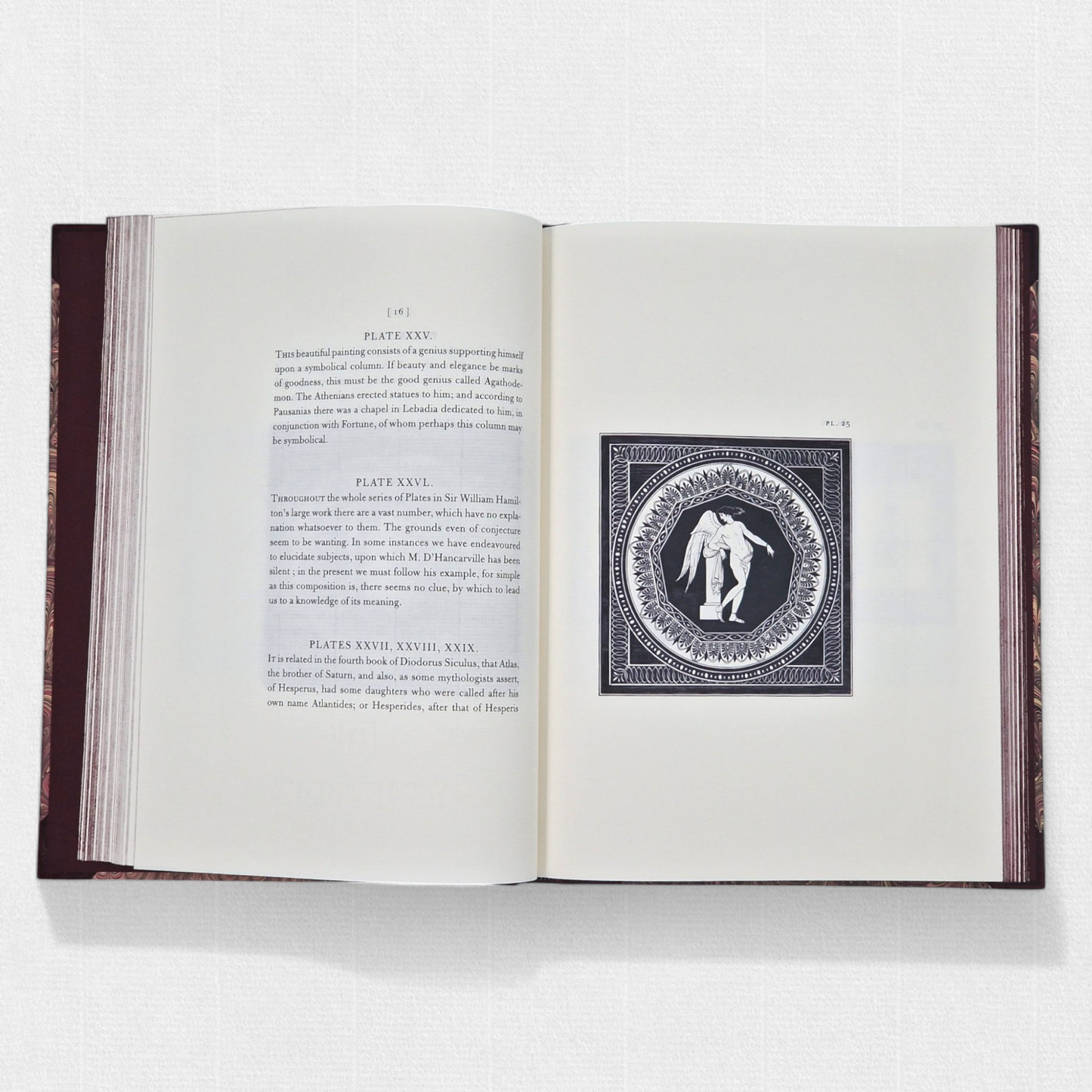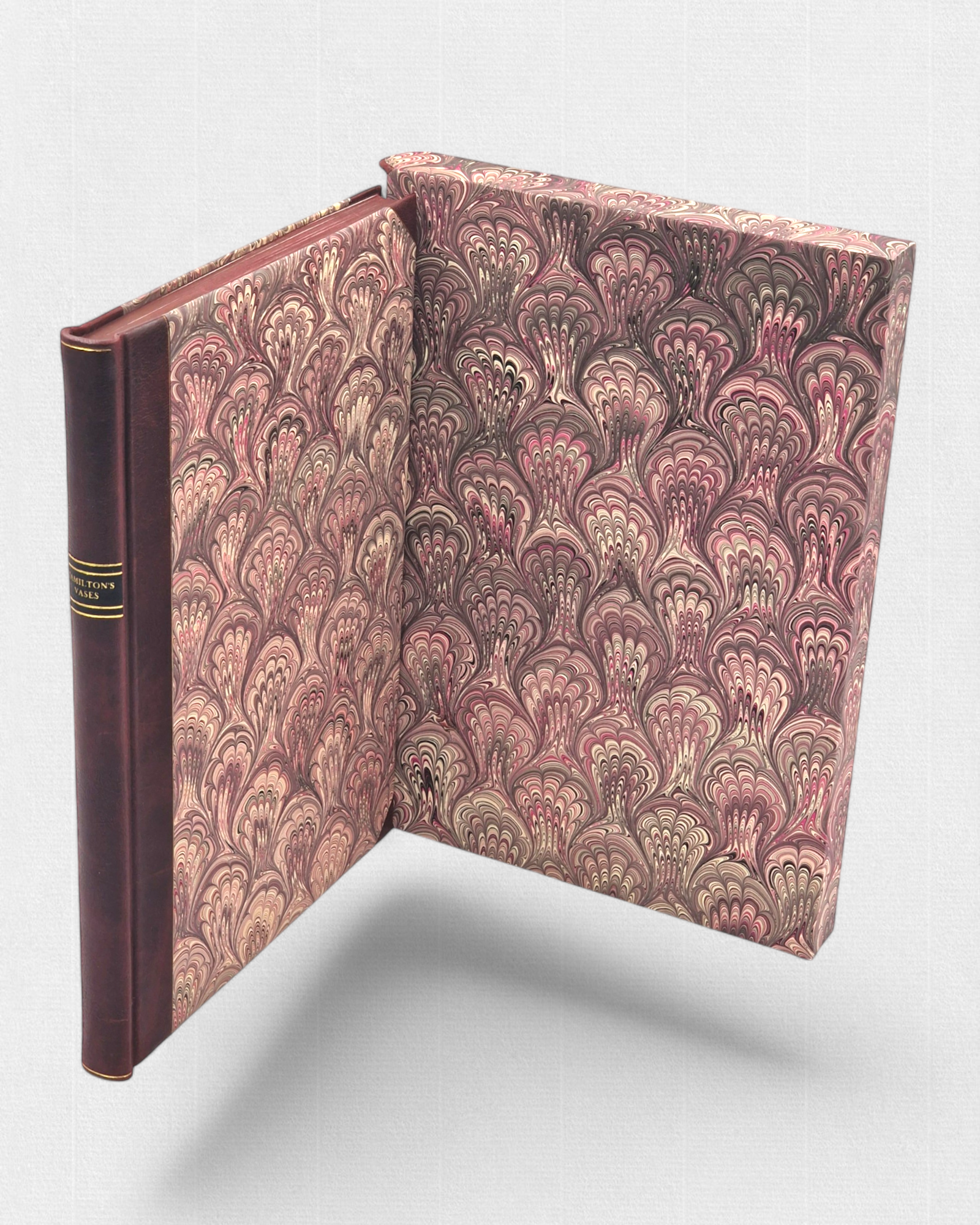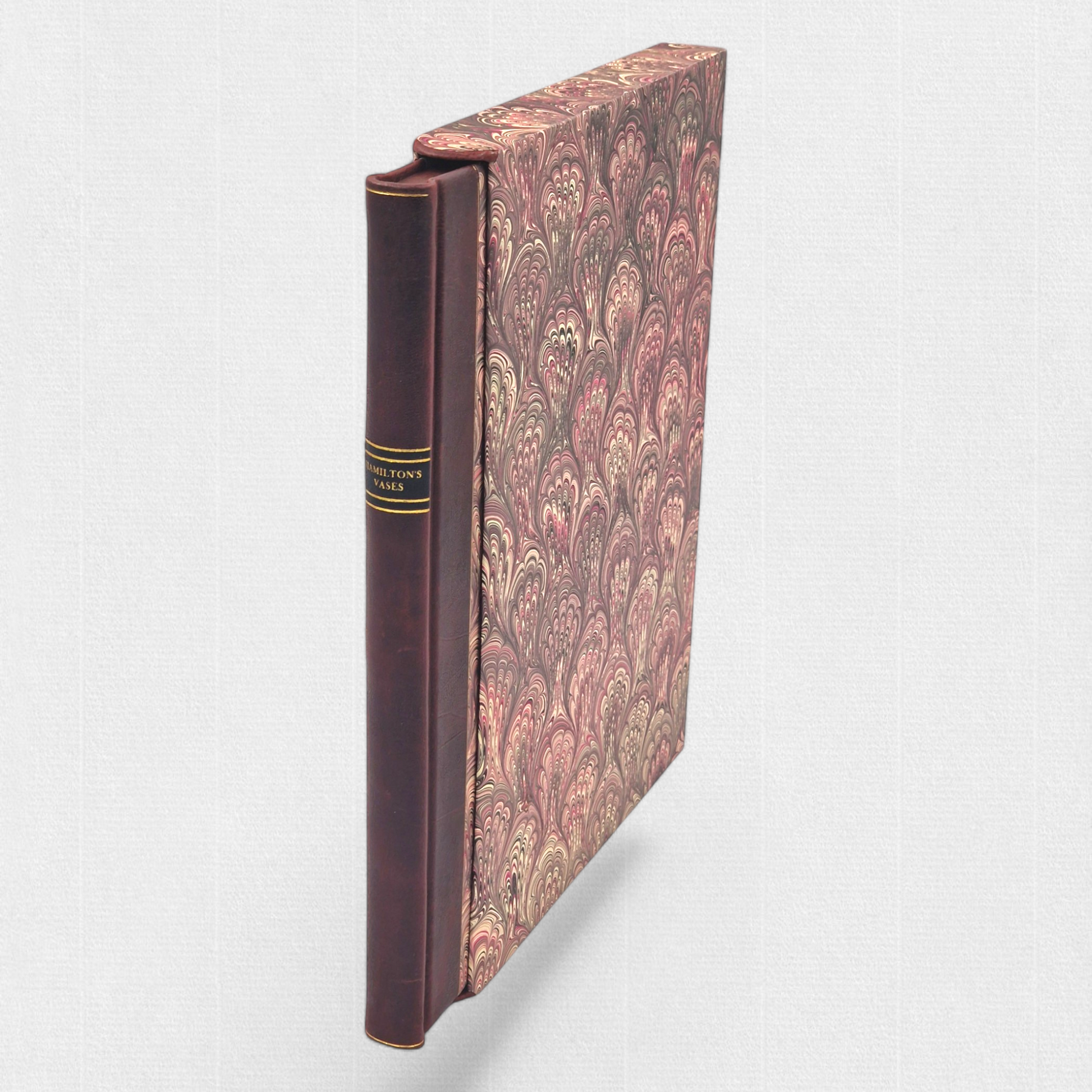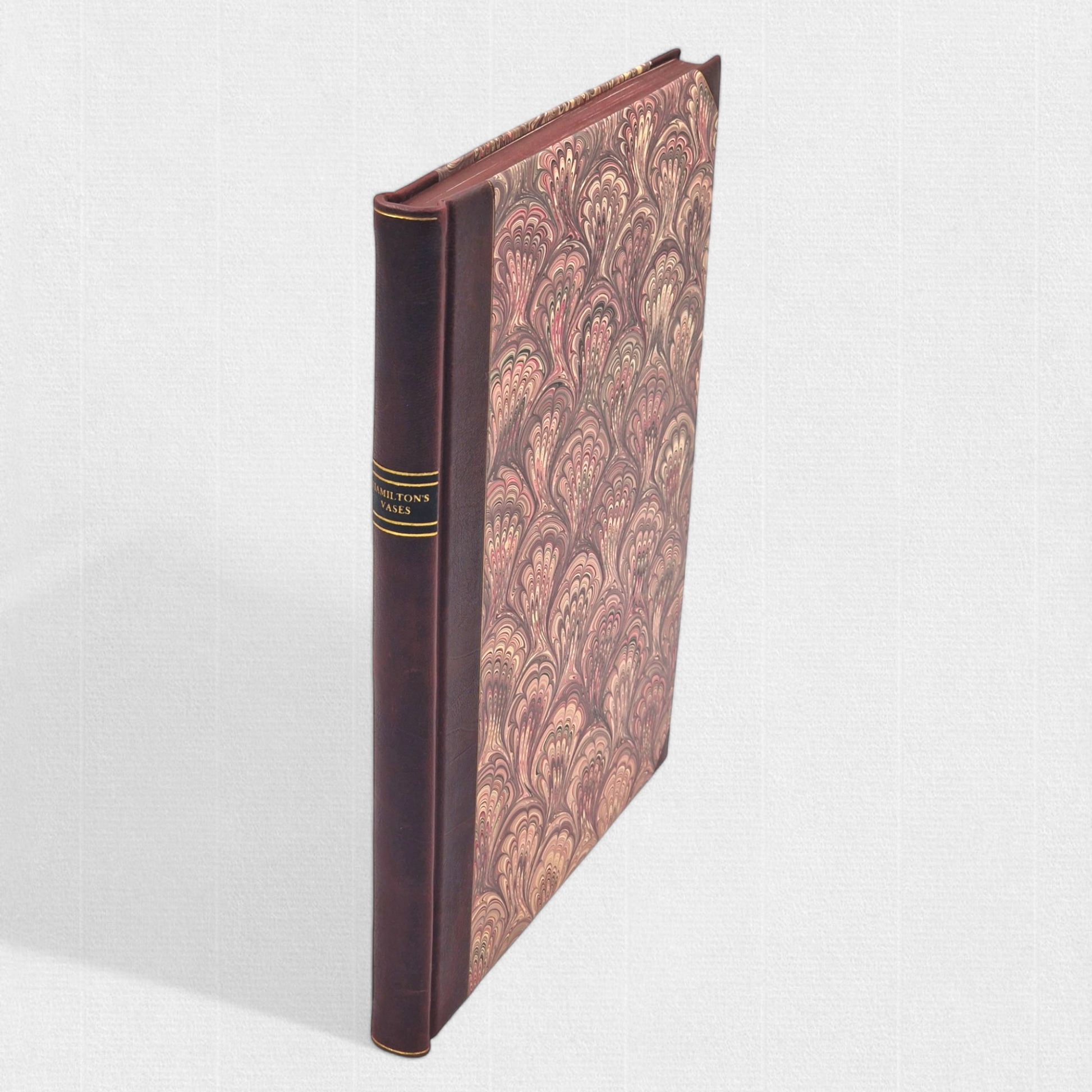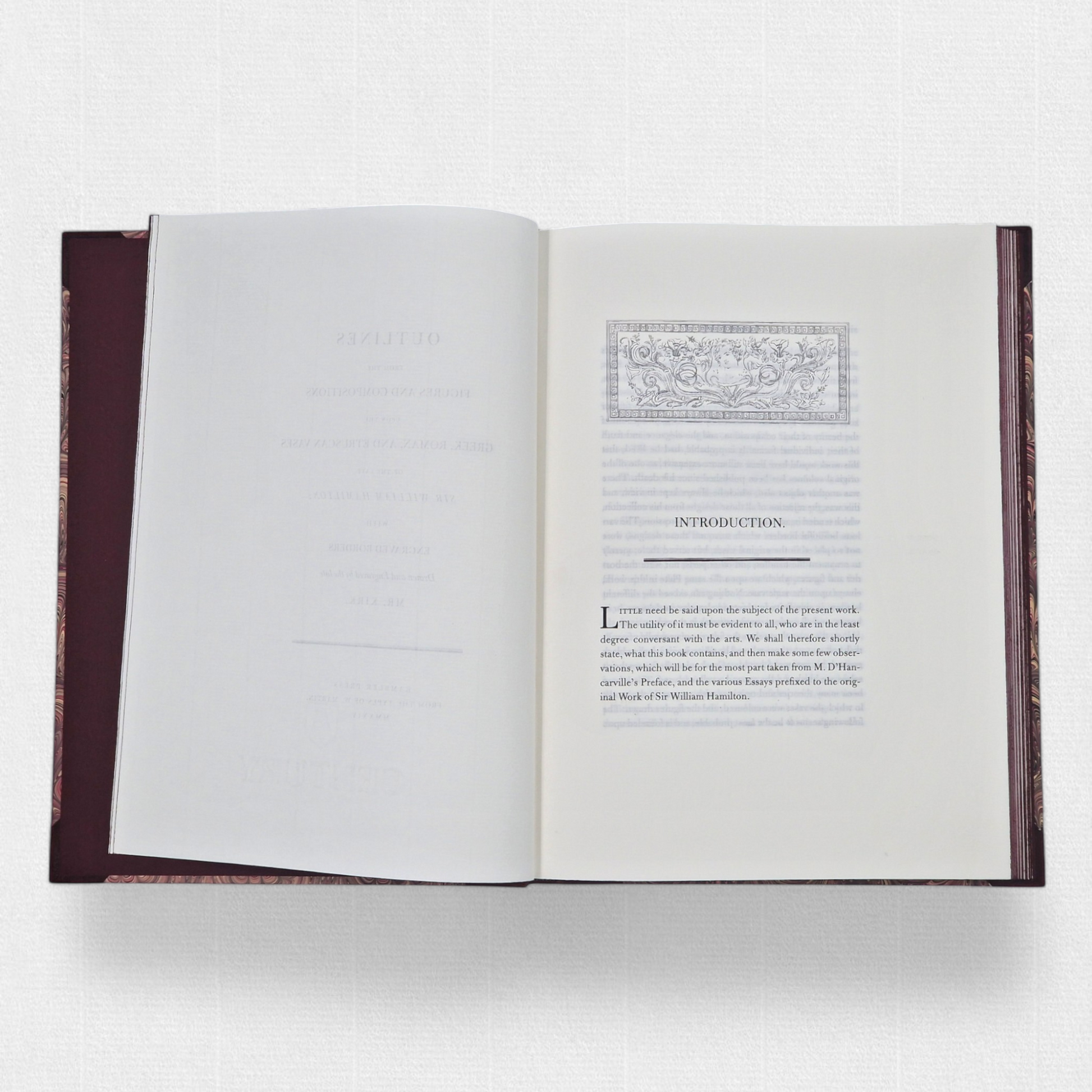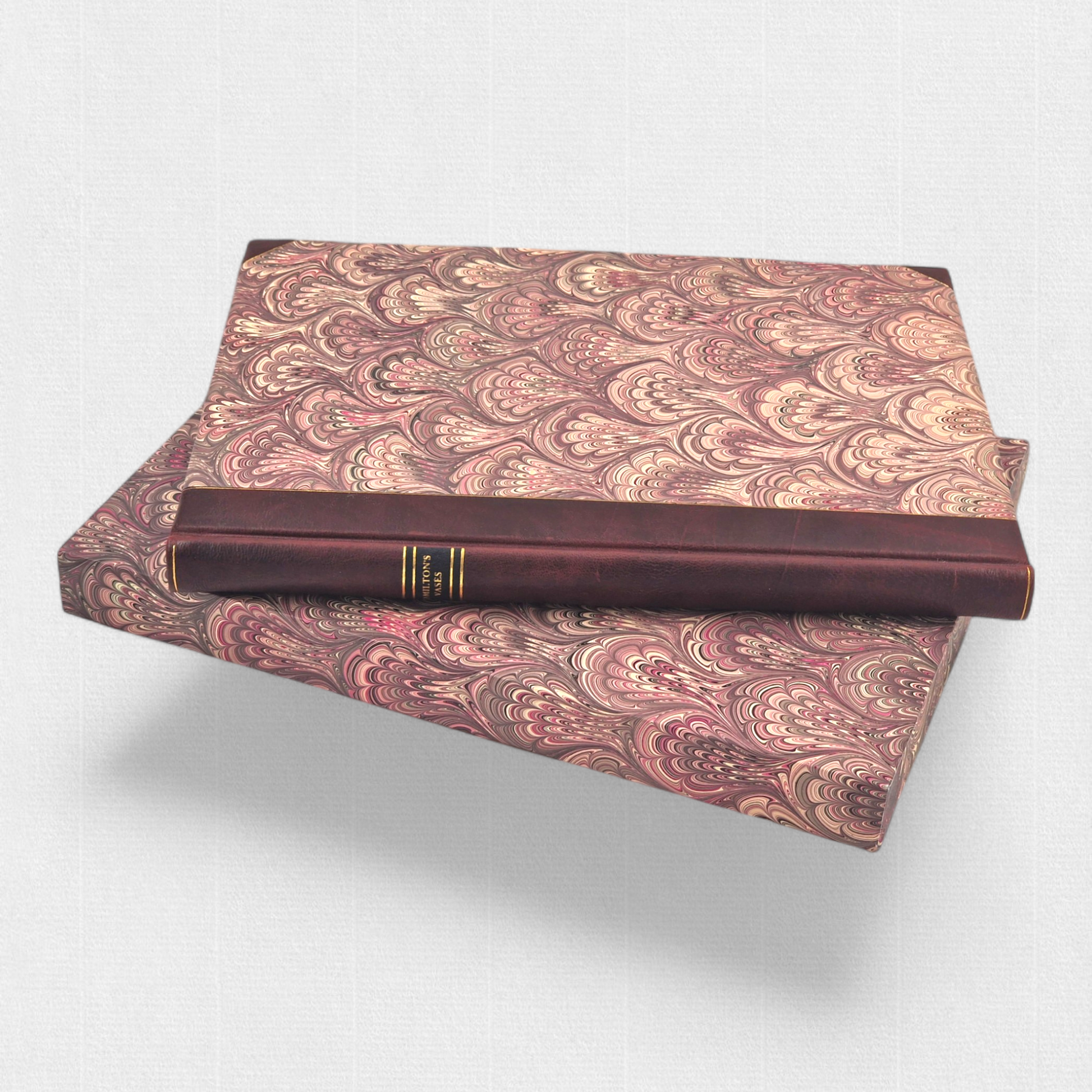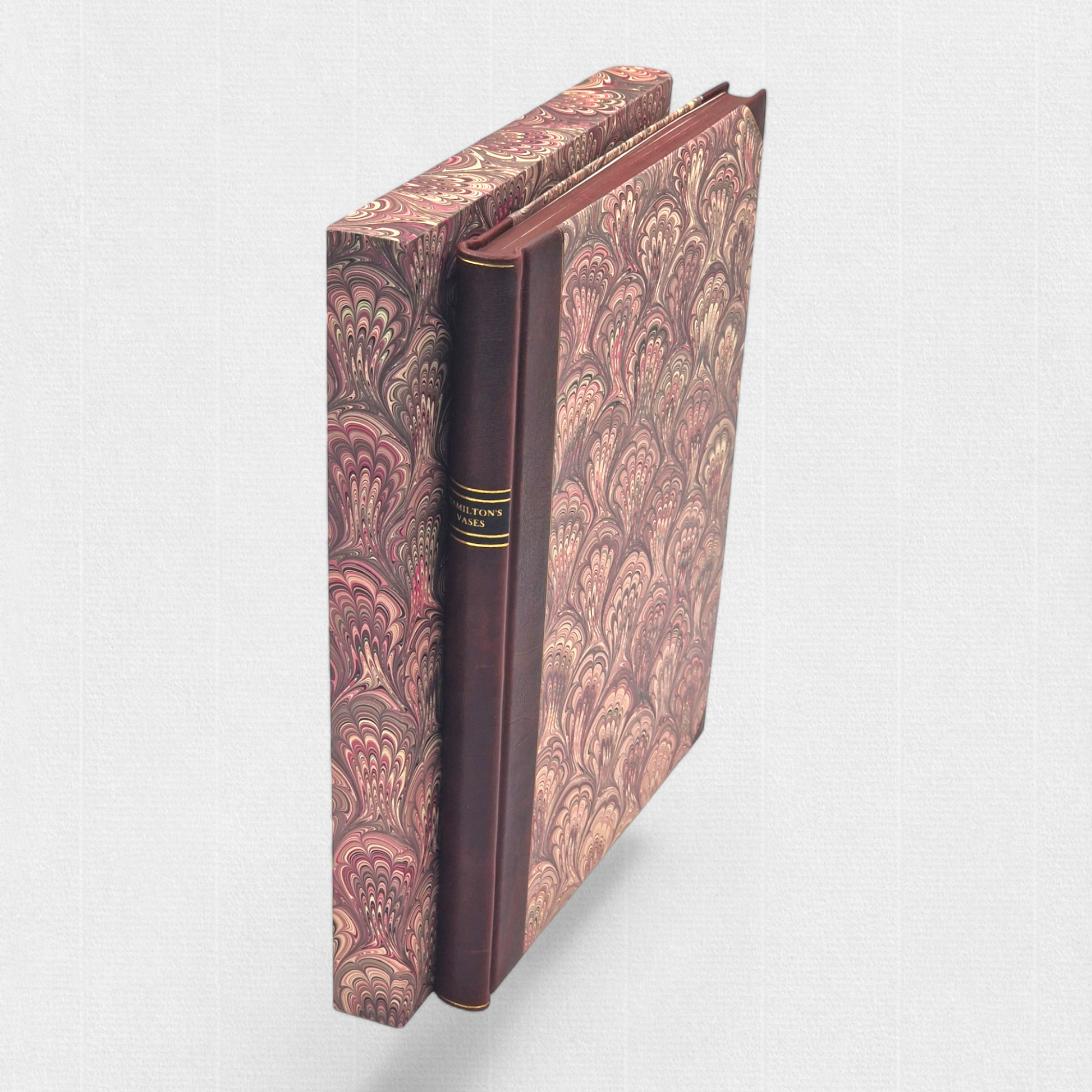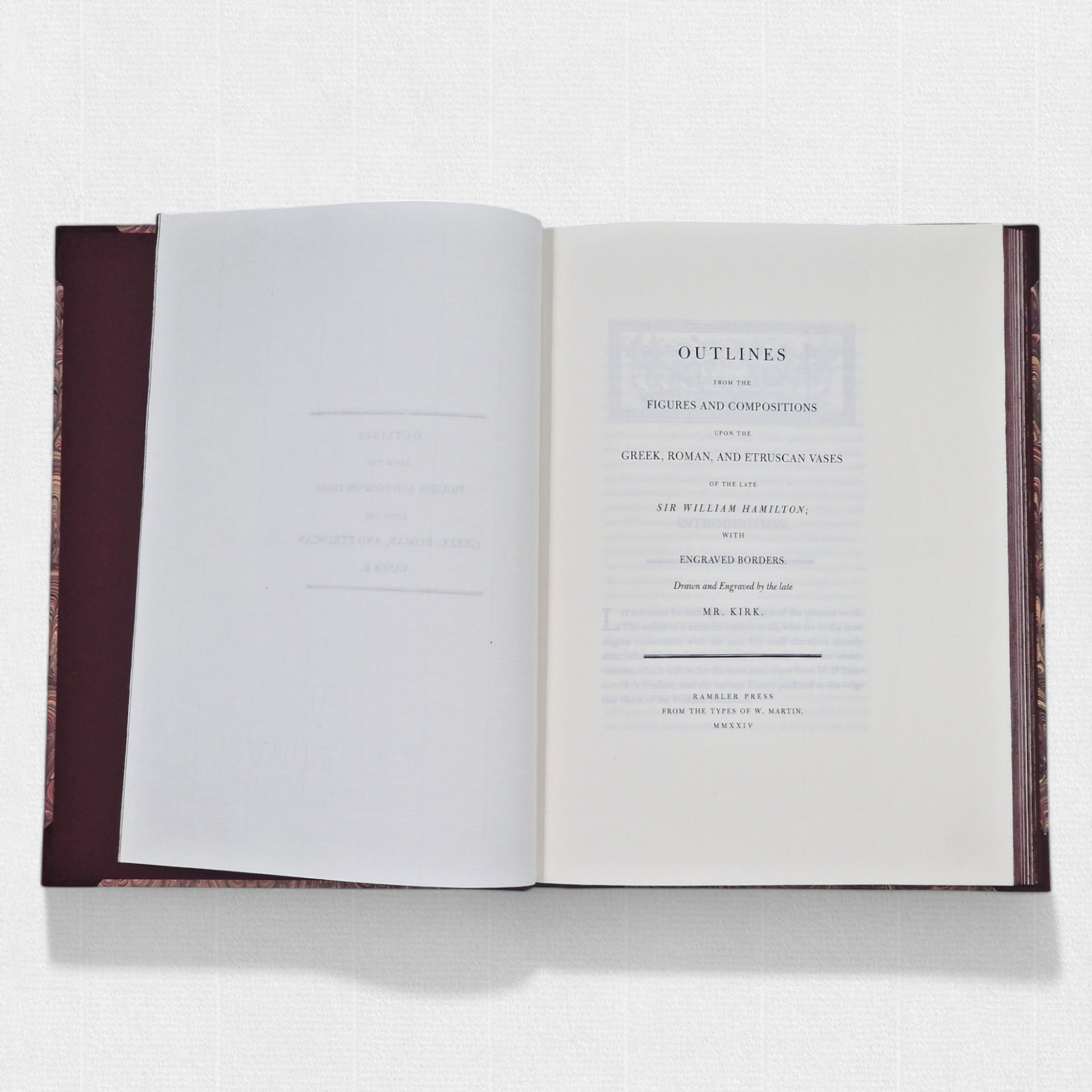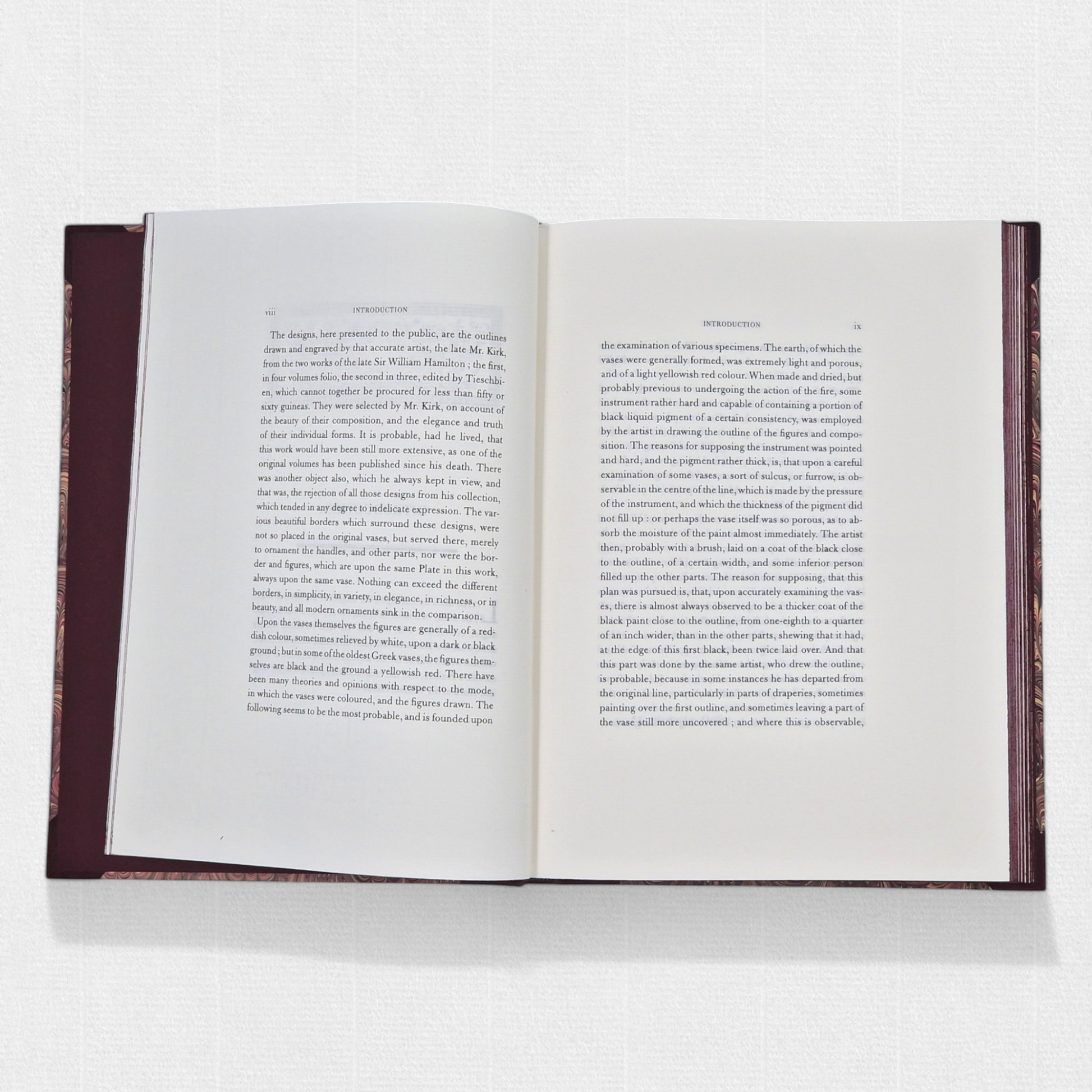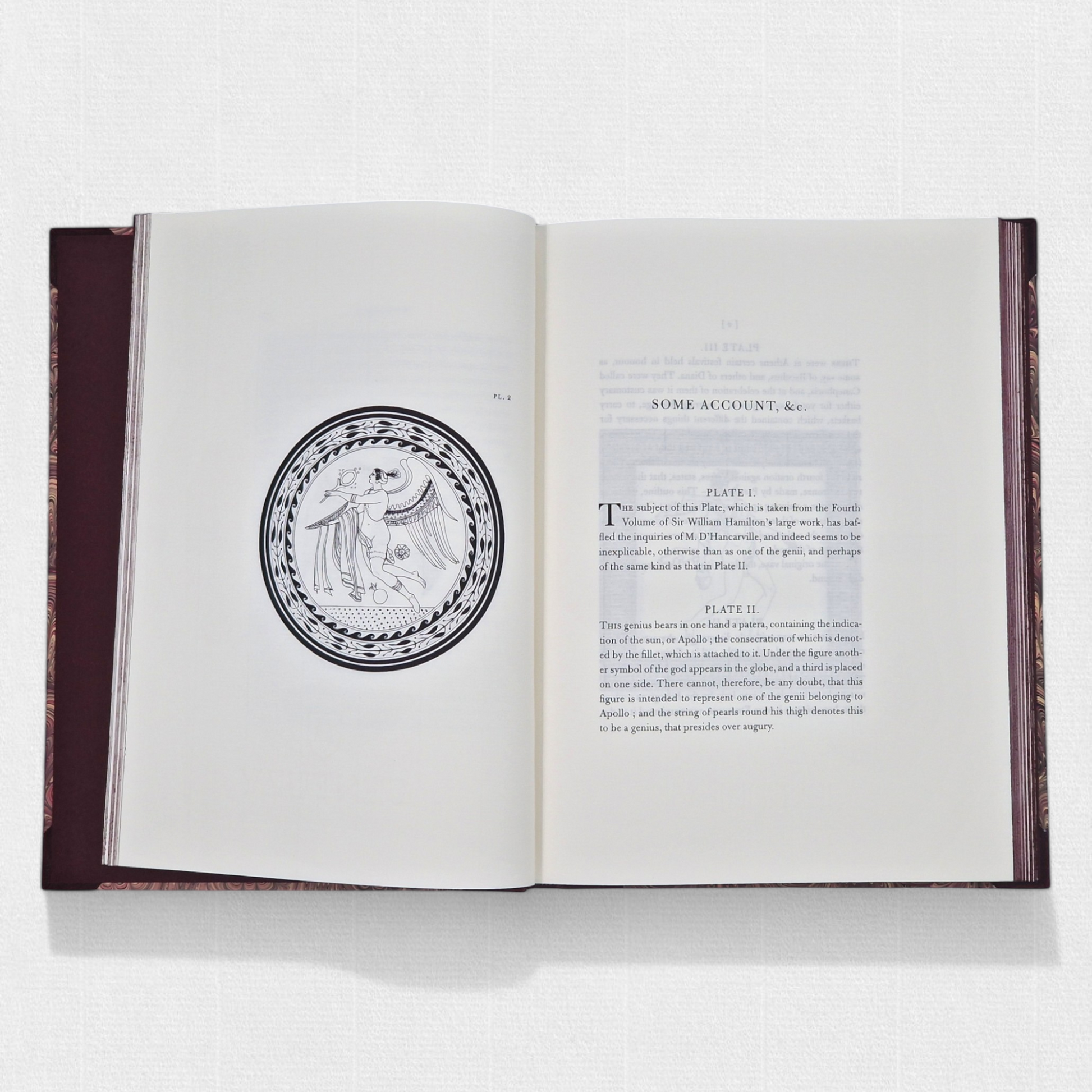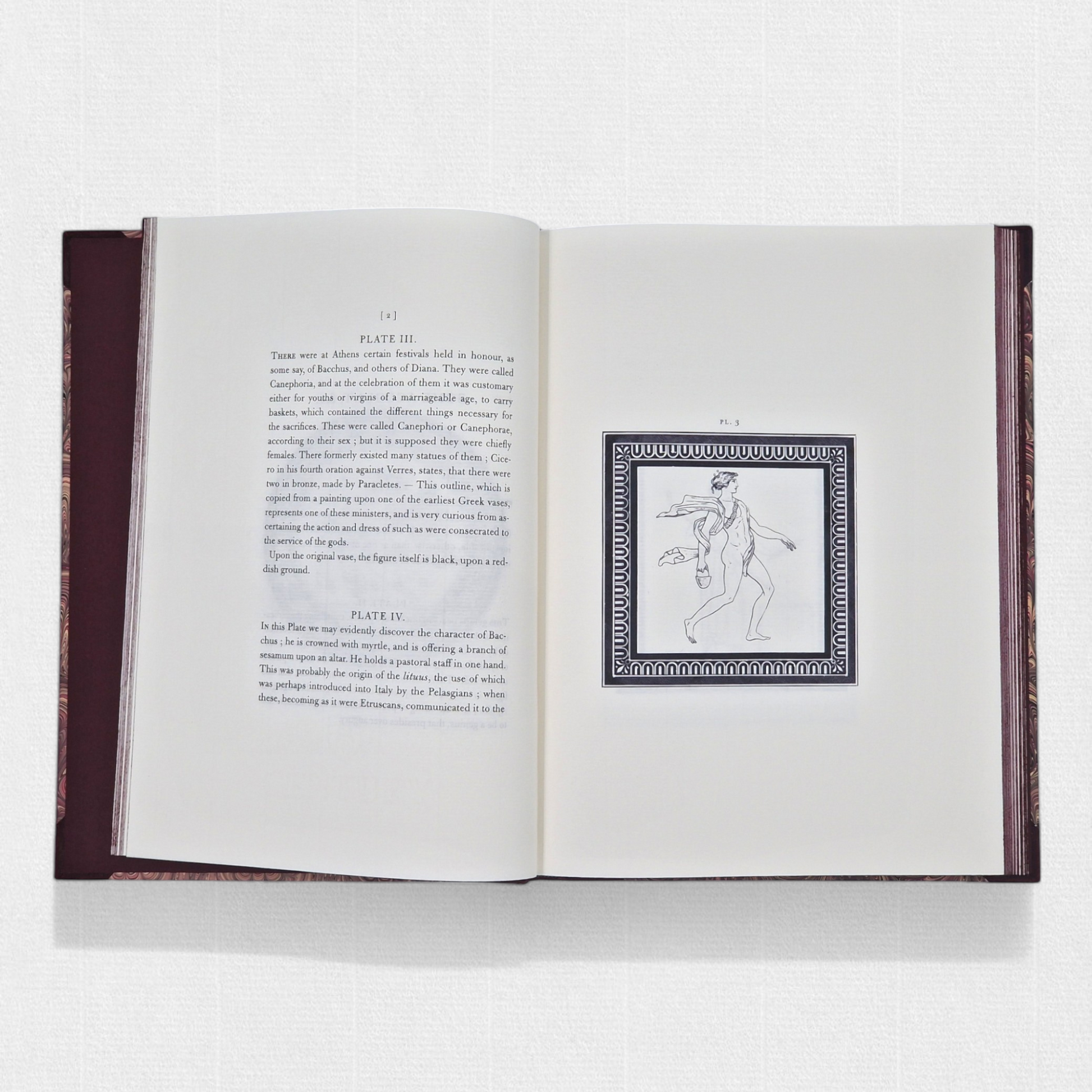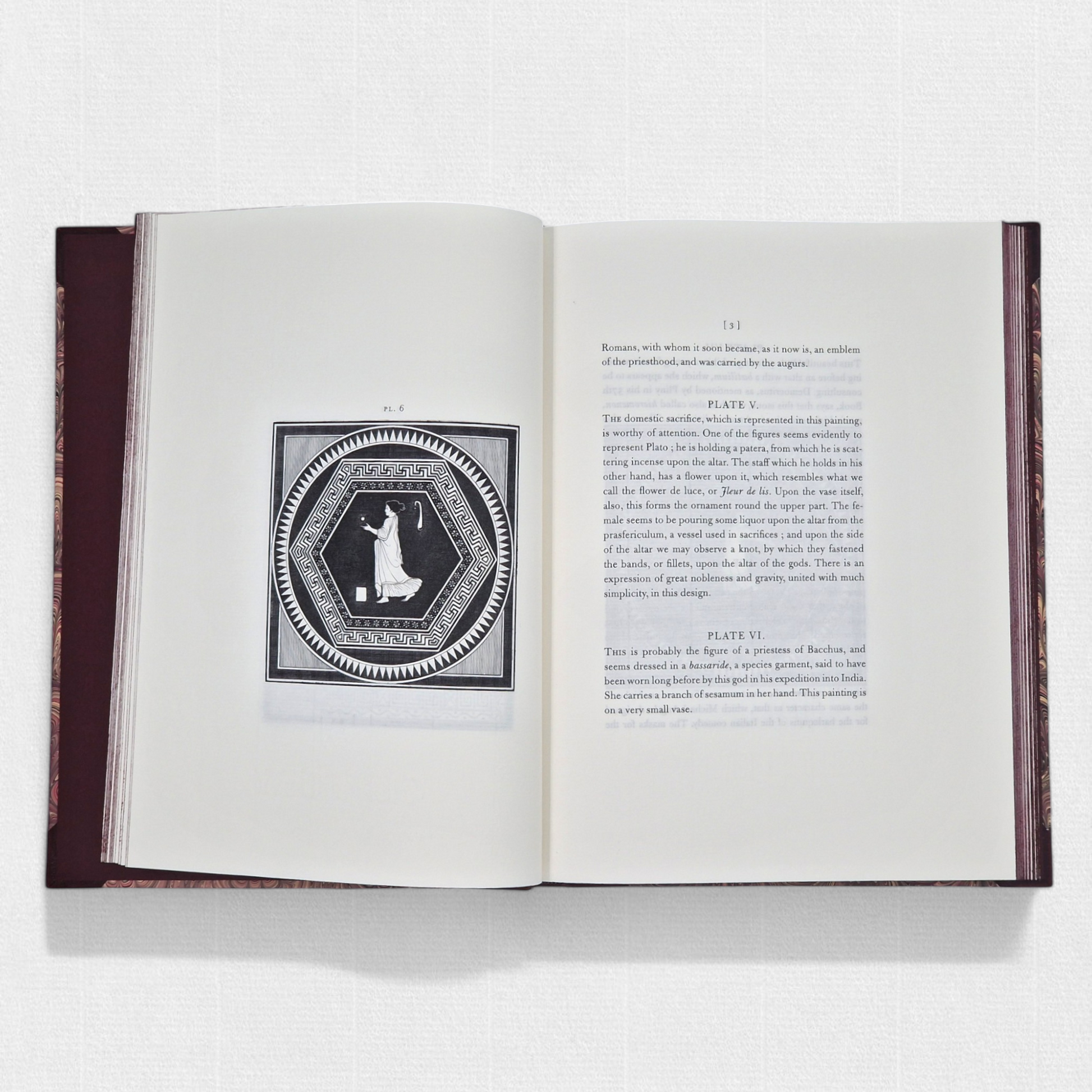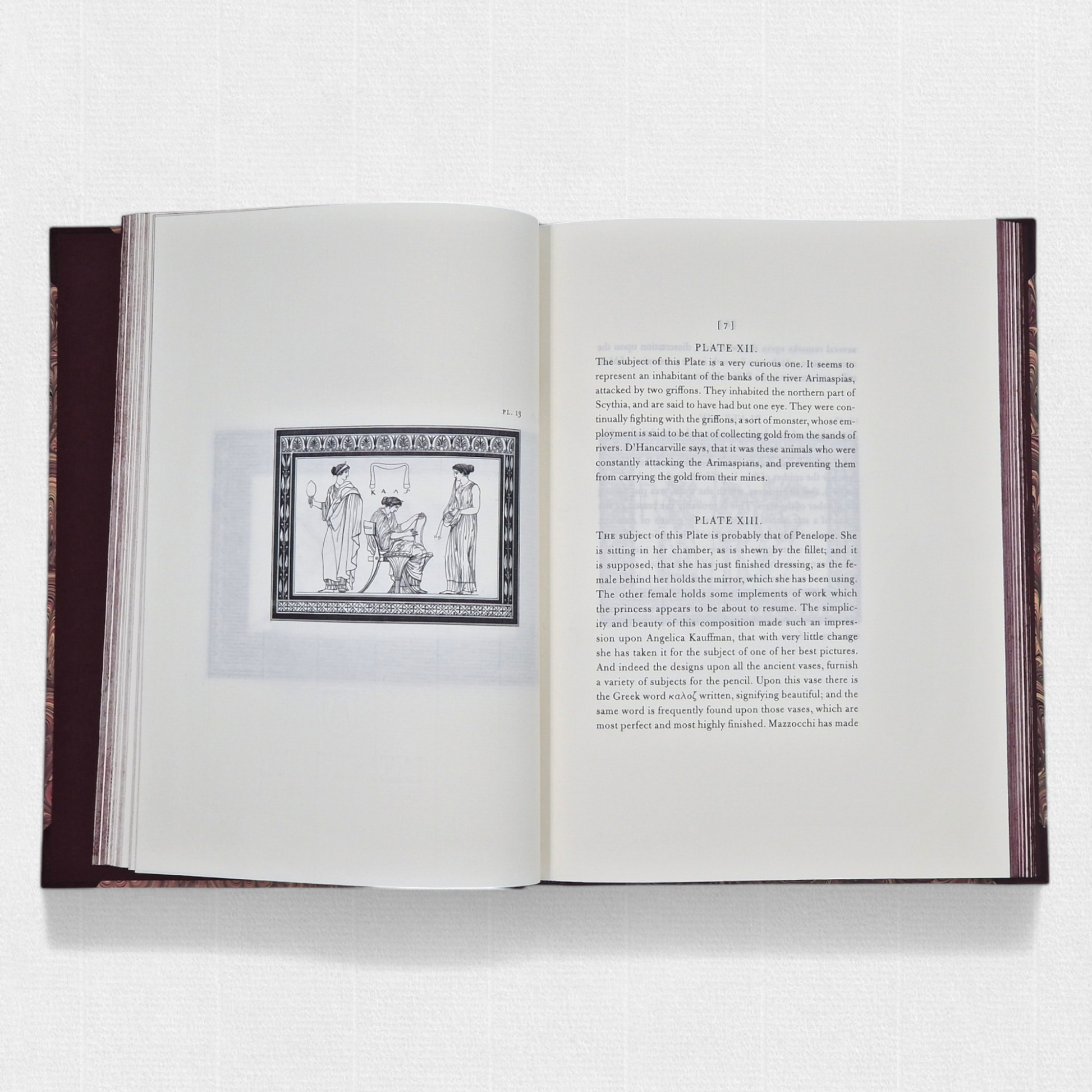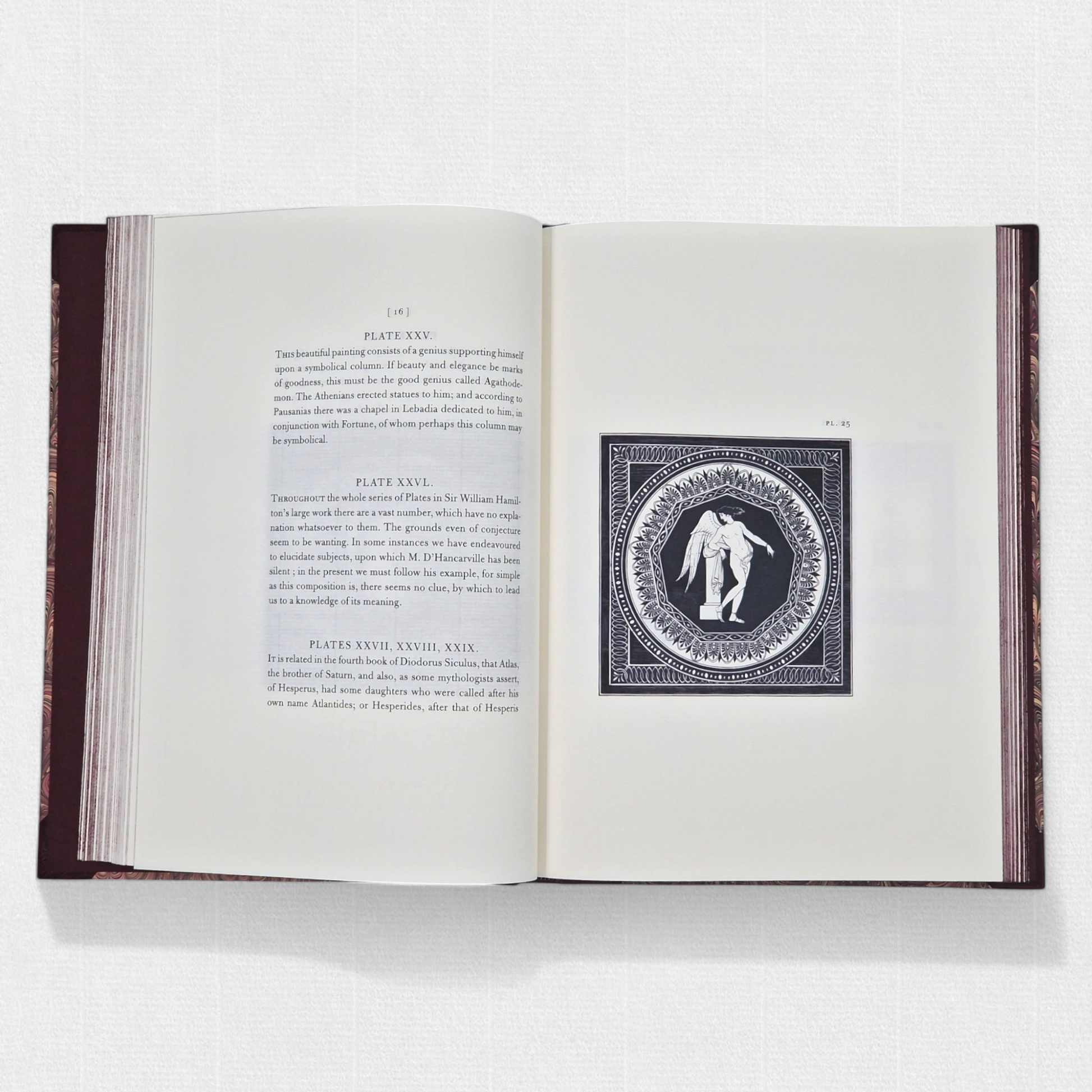SKU:
William Hamilton, Thomas Kirk
Outlines from the Figures and Compositions upon the Greek, Roman, and Etruscan Vases of the Late Sir William Hamilton
Outlines from the Figures and Compositions upon the Greek, Roman, and Etruscan Vases of the Late Sir William Hamilton
Couldn't load pickup availability
This limited edition classical art book from Rambler Press reproduces one of the most significant publications in neoclassical art documentation. Originally issued in 1804 as companion to Sir William Hamilton's legendary ancient vase collection, this handcrafted bibliophile edition showcases Thomas Kirk's masterful archaeological engravings, preserving Greek Roman Etruscan artistic traditions for collectors of rare classical art books and 18th century antiquarian studies scholars.
Hamilton's Collection of Etruscan, Greek, and Roman Antiquities (1766–1776) set the benchmark for visual documentation of ancient classical art. Artists and craftsmen relied on Hamilton's ancient pottery collection documentation to incorporate authentic Greek pottery motifs and Roman decorative elements into ceramics, textiles, and architectural ornamentation. Thomas Kirk (1765–1797), British archaeological draughtsman, translated Hamilton's complex ancient vase paintings into precise line drawings that inspired European ceramic designers and blue and white transferware patterns development.
Each of the 62 handbound plates distills Greek mythological scenes, Roman decorative borders, and Etruscan compositions into essential forms accessible for replication. Hamilton's publication shaped 19th century ceramic design, allowing pottery manufacturers like Josiah Spode to reproduce classical motifs for mass production. This influence extended into scholarly study of neoclassical taste, with Hamilton's volumes serving as foundational references for European decorative arts movements.
For modern collectors and scholars, this classical design reference offers direct access to motifs that influenced European taste for centuries. Libraries, museums, and private collectors recognize its dual value as scholarly resource and beautifully produced art. This Rambler Press limited edition exemplifies dedication to traditional bookbinding quality, making it prestigious addition to classical art books collections.
DESCRIPTION
Quarto volume set in Monotype Bulmer, printed on Century Laid cotton paper. Limited edition of 25 copies. Hand-bound in half leather with marbled boards, housed in protective slipcase. Features 62 plates with gilt titles and marbled edges.
DELIVERY
We carefully ship all our books with FedEx, ensuring every order is fully tracked and insured. This reliable and swift service allows our customers to enjoy a worry-free delivery experience, knowing their purchases are in safe hands.
